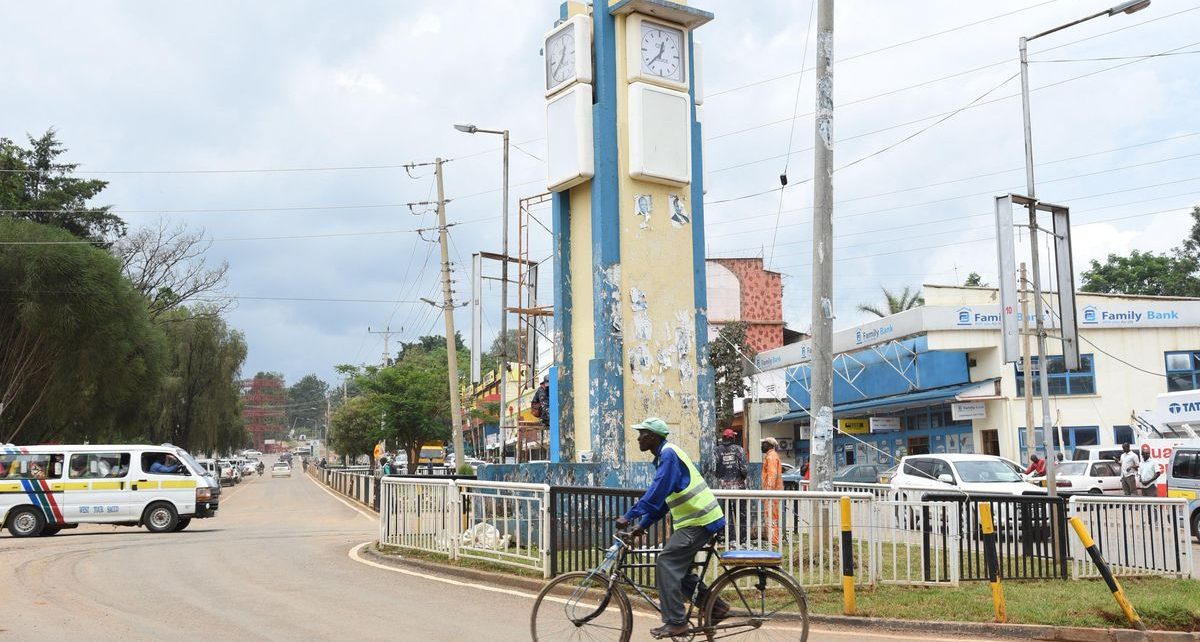Here’s why news stories range from the silly or weird to the cringe-worthy, straight-up felonies and the tragic
By Darius Okolla
Researcher
Kakamega dominates the locus of what would pass for interesting cultural news: from the death of an entire lineage, tales of bullfighting, chicken kills child, cockfighting episodes, and the recent tragic student stampede. There’s the birth of strange calves, man marries sister, walking corpses, wife swaps, and unexplainable phenomena.
It could also be that local issues, secluded from the mainstream narratives of society, ends up being given faulty interpretations and tagged as abnormal. The origins of Kakamega’s cultural tipping point could easily be traced to the infamous Jamin Mukobero’s 2001 murderous spree.
On a rainy Sunday night in late April 20 years ago in Bulira village, Kakamega, 43-year-old Mukombero had dinner with his wife, three sons and a daughter before going to bed. His sons retired to their Itsimba, built next to their father’s house. In the middle of the night, Mukobero crept out of his bed, picked up a machete, and hacked his pregnant wife Susan to death. He then entered his sons’ house and killed the three — Evans, Oscar and Alusiola.
Jamin Mukobero killed nine people in a ghastly rage that gripped the nation. From then on, Kakamega solidified its reputation as the purveyor of weird news
His murderous binge was far from over, as he woke up other family members claiming that his wife was unwell and needed to be rushed to hospital. He killed them too, as his brother fled and hid in the maize plantation. Mukobero killed nine people in a ghastly rage that shook the clan and gripped the nation. From then on, Kakamega solidified its reputation as the country’s purveyor and arena of weird news.
Mukobero’s homicidal orgy united a voyeuristic media and a shocked citizenry in a country where the grapevine and cultural literacies long replaced state-controlled narratives, and where rumours function as a sense-making, socializing and interactive medium. News and their social epidemics with the largest rural population in the country, coupled with a hugely diverse set of ethnic subcultures, Kakamega County is unsurprisingly a crucible of diverse and competing versions of cultural intrigues.
In his book, The Tipping Point, American sociologist Malcom Gladwell talks about the power of context to set off a chain reaction of events, cultural signals, and cues that normalise certain behaviours and beliefs of the kind often reported about Kakamega. The point at which a wide and varied set of complicated cultural news becomes a behavioural epidemic depends on a set of specific personalities, events and spatial conditions.
Kakamega could simply be said to constitute higher levels of culture-bound syndromes than other similar enclaves of rural modernity in the country. While many of these psychiatric and cultural behaviours are based on local beliefs, many carry with them normalised psycho-spiritual explanations. Culture-bound syndromes especially of the social and behavioural kind are rooted in these unique local anthropologies.
The county’s consistent stream of cultural news is one of the nation’s underrated cultural comedies, with the entire county acting as the punch line
Kakamega’s cultural realities could also be explained by the fact that it borders six other counties, including three of the most populous, with over seven million people existing right within its proximity. Being a transit county, there’s a lot of opportunity to interlink subcultures, widen demographics, and incubate quirky cultural ideas.
News and confirmation bias within the political dysfunctionality of this country in which the media revels in the sensational, Kakamega seems to have produced more than its fair share of colourful characters. The county’s consistent stream of cultural news is one of the nation’s underrated cultural comedies, with the entire county acting as the punch line.
Mukobero’s shocking tragedy may have faded from the nation’s collective memory
To be fair, it could be that the region is typecast based on the concept of availability heuristics, a cognitive method by which our brain uses shortcuts to process news and draw conclusions. Having been fed a staple diet of editorial news from the region laced with spooky taboos, beliefs and ideas, we may have unconsciously learnt to view the region through a stereotyped lens.
Mukobero’s shocking tragedy may have faded from the nation’s collective memory but the media has continued to inundate us with tales of crazy news including the December incident of a dead man who allegedly refused to be buried. A lot of the county’s news stories range from the silly or weird to the cringe-worthy, to straight-up felonies, to the tragic.
from man killed over ugali, to corpse protests over unpaid dowry, to man sells wife for Sh500, to corpse refuses to be buried
Could it then be that, as the most advanced county in the region, with great infrastructure and ethno-cultural diversity, the county is simply the best muse a newscaster could wish for?
It could also be that the phenomenon is primarily pegged on the power of a self-perpetuating viral effect and observation bias-where you tend to notice news that confirms the bias. Local newscasters parade simplistic headlines, from man killed over ugali, to corpse protests over unpaid dowry, to man sells wife for Sh500, to corpse refuses to be buried.
Editor’s note: This abridged version first appeared as ‘Kakamega and the making of bizarre news’ on www.theelephant.info on December 18, 2020.

